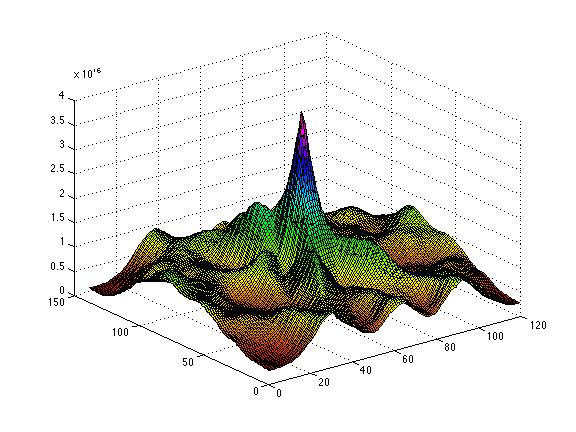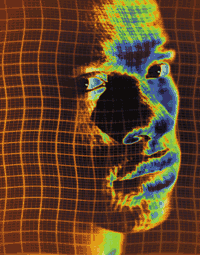.: Click here to download :.
Correlation filters have been applied successfully to
automatic target recognition (ATR) problems. The most
basic correlation filter is the matched spatial filter (MSF),
whose impulse response (in 2-D, point spread function) is
the flipped version of the reference image. While the MSF
performs well at detecting a reference image corrupted by
additive white noise, it performs poorly when the reference
image appears with distortions (e.g., rotations, scale
changes). Thus one MSF will be needed to detect each appearance
of an object. Clearly this is computationally unattractive
for practical pattern recognition. Hester and
Casasent addressed this challenge with the introduction
of the synthetic discriminant function (SDF) filter. The SDF
filter is a linear combination of MSFs where the combination
weights are chosen so that the correlation outputs corresponding
to the training images would yield pre-specified
values at the origin. These pre-specified peak values are
often referred to as peak constraints. The peak values corresponding
to the authentics (also called the true class) are
typically set to 1, and hence this SDF filter was known as
the equal correlation peak (ECP) SDF filter. In principle, a
single ECP SDF filter could replace many MSFs.
Object recognition is performed by cross-correlating an
input image with a synthesized template or filter and processing
the resulting correlation output. The correlation
output is searched for peaks, and the relative
heights of these peaks are used to determine whether the
object of interest is present or not. The locations of the
peaks indicate the position of the objects.
Face verification is an important tool for authentication of
an individual and it can be of significant value in security
and e-commerce applications. We have developed an effective
application of correlation filters for face verification.
The performance of a specific type of correlation filter
called the minimum average correlation energy (MACE)
filter is evaluated using Facial Expression Database
collected at the Advanced Multimedia Processing Lab at
Carnegie Mellon University (CMU).
Index Terms: Matlab, source, code, face, identification, authentication, recognition, correlation, filters, filter, mace.
 |
Figure 1. Correlation filters |
||||||||||||||
|
A simple and effective source code for Correlation Filters Face Verification. |
|||||||||||||||
Demo code (protected
P-files) available for performance evaluation. Matlab Image Processing Toolbox is required.
|
|||||||||||||||
|
Release |
Date |
Major features |
|||||||||||||
|
2.0 |
2011.12.07 |
|
|||||||||||||
|
1.0 |
2010.08.10 |
|
|||||||||||||
We recommend to check the secure connection to PayPal, in order to avoid any fraud. This donation has to be considered an encouragement to improve the code itself. |
|||||||||||||||
Correlation Filters Face Verification. Click here for
your donation. In order to obtain the source code you
have to pay a little sum of money: 300 EUROS (less
than 420 U.S. Dollars). |
|||||||||||||||
Once you have done this, please email us luigi.rosa@tiscali.it As soon as possible (in a few days) you will receive our new release of Correlation Filters Face Verification. Alternatively, you can bestow using our banking coordinates:
|
|||||||||||||||
The authors have no relationship or partnership
with The Mathworks. All the code provided is written in Matlab
language (M-files and/or M-functions), with no dll or other
protected parts of code (P-files or executables). The code was
developed with Matlab 2006a. Matlab Image Processing Toolbox is required.
The code provided has to be considered "as is" and it is without any kind of warranty. The
authors deny any kind of warranty concerning the code as well
as any kind of responsibility for problems and damages which may
be caused by the use of the code itself including all parts of
the source code.

